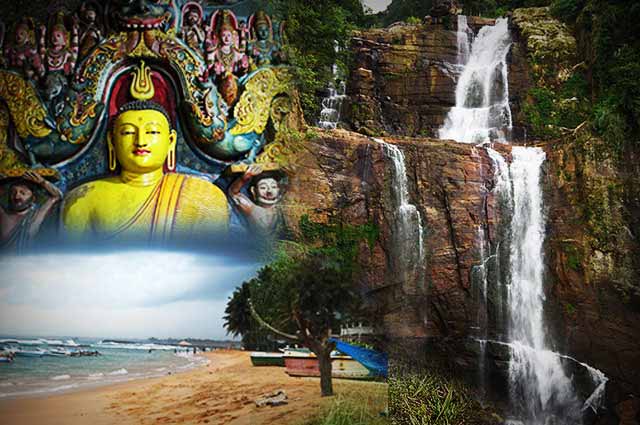Sri Lanka is a small country, yet teemed with wildlife. It has 26 national parks, The most famous ones are Yala National park, Wilpattu National Park, Udawalawe National Park and Minneriya National park. Holding Eight UNESCO World Heritage sites, including Sinharaja Forest biosphere reserve, designated by UNESCO. It covers only a small portion of the island, 88.64 km2 to be precise, but they’re home to half of all endemic and native species in Sri Lanka, including elusive cats and slender loris.
When it comes to wildlife tours, Sri Lanka is most famous for majestic Asian elephant and leopards, (one of the five “big cats”). Sri Lanka holds the world record for highest leopard density in the world, here leopard are super large since they are the highest ranking formidable predators in Sri Lanka, they have evolved more like a jaguar with more muscular, more powerful may be even more powerful than a jaguar, they roam National parks proudly with no idea of fear whatsoever. Not to mention Sri Lanka has the highest density of elephants in Asia. Also World largest elephant gathering happens here in Sri Lanka.
Sri Lank attractions include :
Head towards the golden beaches of the south coast of the island to witness yet another UNESCO World Heritage site: the Galle Dutch Fort, built by the Portuguese and fortified by the Dutch. Today, with charming villas, ancient churches and cobblestoned streets, the fort still retains much of its quaint colonial aura and enchants anyone who walks upon its ramparts overlooking a deep blue sea.
The Yala National Park is whereto go for a glimpse of the abundant Sri Lankan wildlife in its natural habitat. Yala is famous for its population of majestic wild elephants, stealthy leopards roaming free, as well as an astounding variety of birds native to Sri Lanka.
The main attraction is Wilpattu National Park, i visited it with help from go4safari.com, a travel experts agency specialized in Sri Lanka tours,
Wilpattu means ‘natural lakes’ in Sinhala and ’10 lakes’ in Tamil and lakes are exactly what you’ll find at Wilpattu National Park. Visitor numbers remain low, even in high season, which gives Wilpattu a genuine sense of wilderness. On the flip side, however, the dense forest and general skittishness of the animals means that actually sighting wildlife is less of a sure thing than in the country’s more-visited parks. This is a place for the more dedicated safari-goer.
WILPATTU NATIONAL PARK is located 26 km north of Puttalam (approximately 180 km north of Colombo) spanning from the northwest coast inland towards the ancient capital of Anuradhapura (50 km to the east of the park). Covering an impressive 425 sq miles, the park is Sri Lanka ‘s largest, and having reopened in March, 2010 it is just a matter of time before it becomes a popular eco-tourism destination. Wilpattu is a fairly thick dry zone jungle interspersed with a number of flood plain lakes banked with delicate white sands. It boasts an impressive variety of flora in huge expanses of forest, and varied wildlife, including deer, elephants, wild boar, sloth bears and leopards.
